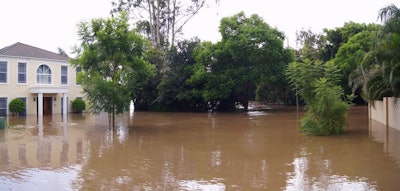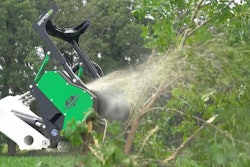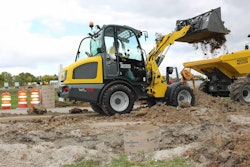 Flood waters not only deprive turfgrass of oxygen but can leave layers of sediment as well.
Flood waters not only deprive turfgrass of oxygen but can leave layers of sediment as well.Photo: Tatiana Gerus
For people living in flood-prone areas, the periodic influx of water is unavoidable, but there are some ways to help your landscape thrive rather than suffer in the wake of inclement weather.
The length of time necessary for a lawn to recover from flooding depends on how long the property was inundated. A yard that has been submerged for more than four days is likely to be heavily damaged. Repeated flooding can also weaken turfgrass’s resistance to the natural disaster.
Repeated floods prompted one Norfolk, Virginia, couple to finally make a change. Carole and Bob Parsons’ home has flooded so many times that the couple was able to secure a grant from the Federal Emergency Management Agency (FEMA) to have their house elevated by 13 feet.
In addition to raising the house, the Parsons decided to put their lawn out of its misery and have a bay-friendly landscape installed.
“When we planned our elevation project, it was a perfect time to eliminate grass from our property to help keep the bay clean,” Carole Parsons told The Virginian-Pilot.
The Parsons contacted Eric Gunderson of Southern Branch Nursery, based in Chesapeake, Virginia, to help them choose plants that not only would lessen run-off and tolerate flooding but which also could attract pollinators.
Gunderson suggested planting saltmarsh cordgrass as a border around the garden so its strong roots could keep the soil stable. He advised the couple to intermix the cordgrass among their flowers as well.
“That is the anchor that holds the soil, and the wildflowers grown among the cordgrass,” Gunderson said.
Some of the other plants used included Carolina jessamine, spotted beebalm, Joe Pye weed, milkweed, seashore mallow, asters, red chokeberry, and beach plum.
“The first day they were planted, butterflies and honeybees came, which was the idea,” Mrs. Parsons said. “I couldn’t keep my eyes off it.”
The Parsons’ new plants have already recovered from the recent effects of tropical storm Hermine. The seaside goldenrod is already blooming and the sweet yellow sneezeweed didn’t lose all of its blooms during the storm either.
“The wind burned off a lot of the leaves in the earlier storm,” Mrs. Parsons said. “But Eric Gunderson looked at the plants and said the roots are still good. He said they should be bouncing back by next spring.”
Because of the Parsons’ environmentally adaptive changes to their yard, the residence was named a “Bay Star” home. The area’s Bay Star Homes program recognizes those who work to improve the waterways.
The recognition is nice, but it certainly isn’t the only benefit of the Parsons’ investment.
“We’ll also save time, energy and money over the long run with this type of landscaping,” Mrs. Parsons said.
For a list of plants that can tolerate flooded conditions, check out the Clemson Cooperative Extension link here.









